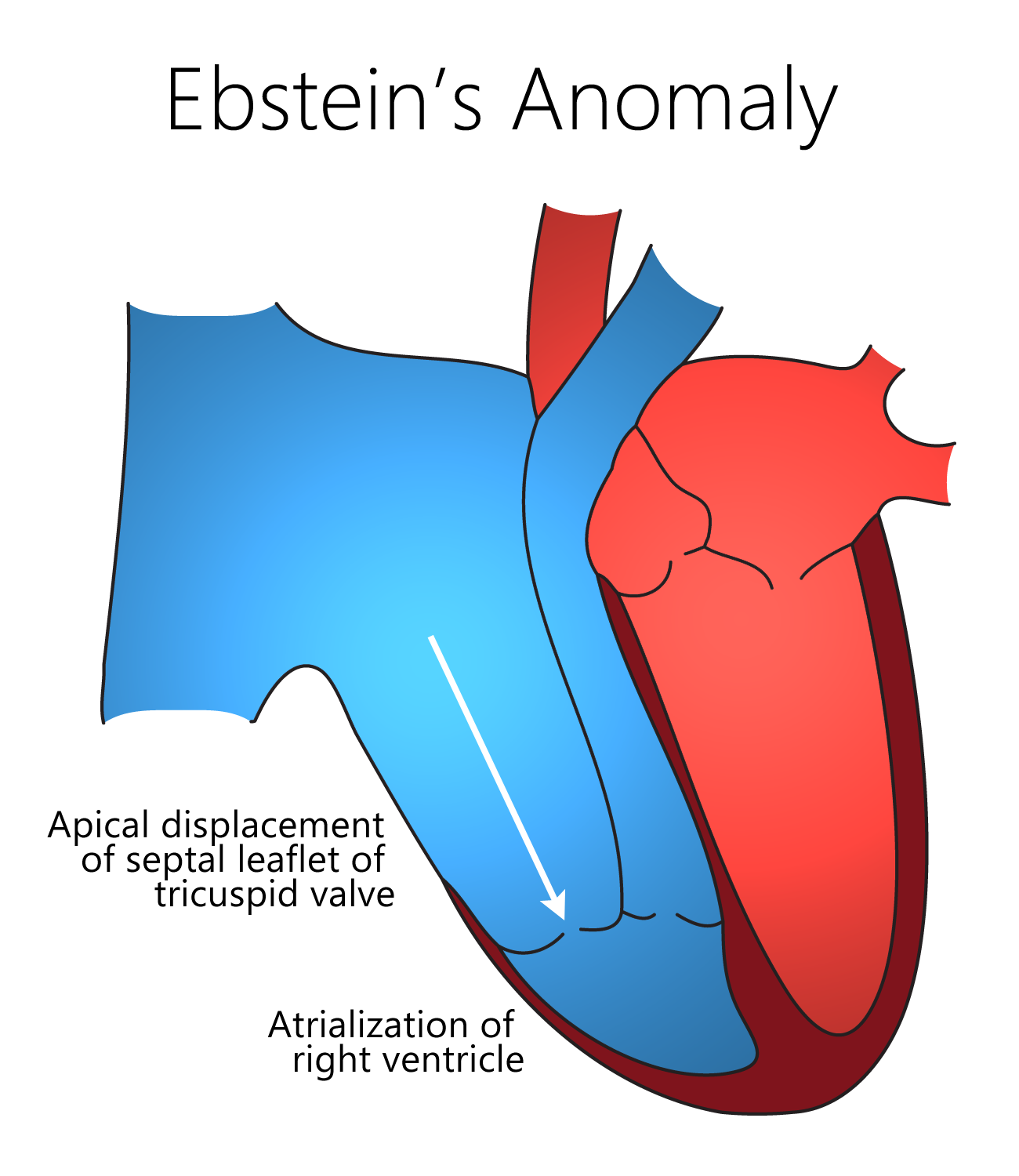WBR0873
| Author | [[PageAuthor::Serge Korjian M.D. (Reviewed by Serge Korjian)]] |
|---|---|
| Exam Type | ExamType::USMLE Step 1 |
| Main Category | MainCategory::Biochemistry, MainCategory::Embryology |
| Sub Category | SubCategory::Neurology |
| Prompt | [[Prompt::A 16-year-old boy presents to the pediatrics clinic for 2 weeks of fatigue and dyspnea on exertion. On physical exam, the physician notices mild finger cyanosis and clubbing and an elevated jugular venous pressure. The pediatrician orders an echocardiogram that shows apical displacement of the septal tricuspid leaflet of 9 mm/m2 with a dilated right ventricle and decreased contractility. Which of the following drugs was the patient's mother most likely receiving during her pregnancy?]] |
| Answer A | AnswerA::Carbamazepine |
| Answer A Explanation | AnswerAExp::Carbamazepine intake during pregnancy is associated with neural tube defects, IUGR, and craniofacial defects. Ebstein's anomaly has not been linked to carbamazepine intake. |
| Answer B | AnswerB::Lithium |
| Answer B Explanation | AnswerBExp::Lithium intake during pregnancy has been associated with Ebstein's anomaly development. |
| Answer C | AnswerC::ACE inhibitors |
| Answer C Explanation | AnswerCExp::ACE Inhibitor intake during pregnancy is associated with renal damage in the fetus. Ebstein's anomaly has not been linked to ACEI intake. |
| Answer D | AnswerD::Tetracyclines |
| Answer D Explanation | AnswerDExp::Tertacycline intake during pregnancy is associated with discolored primary teeth in infants. Ebstein's anomaly has not been linked to tertacycline intake. |
| Answer E | AnswerE::Warfarin |
| Answer E Explanation | AnswerEExp::Warfarin intake during pregnancy is associated with bone deformities and fetal hemorrhage. Ebstein's anomaly has not been linked to warfarin intake. |
| Right Answer | RightAnswer::B |
| Explanation | [[Explanation::
|
| Approved | Approved::Yes |
| Keyword | WBRKeyword::Lithium, WBRKeyword::Ebstein's Anomaly, WBRKeyword::Congenital heart diseases, WBRKeyword::Congenital abnormalities, WBRKeyword::Bipolar disorder |
| Linked Question | Linked:: |
| Order in Linked Questions | LinkedOrder:: |